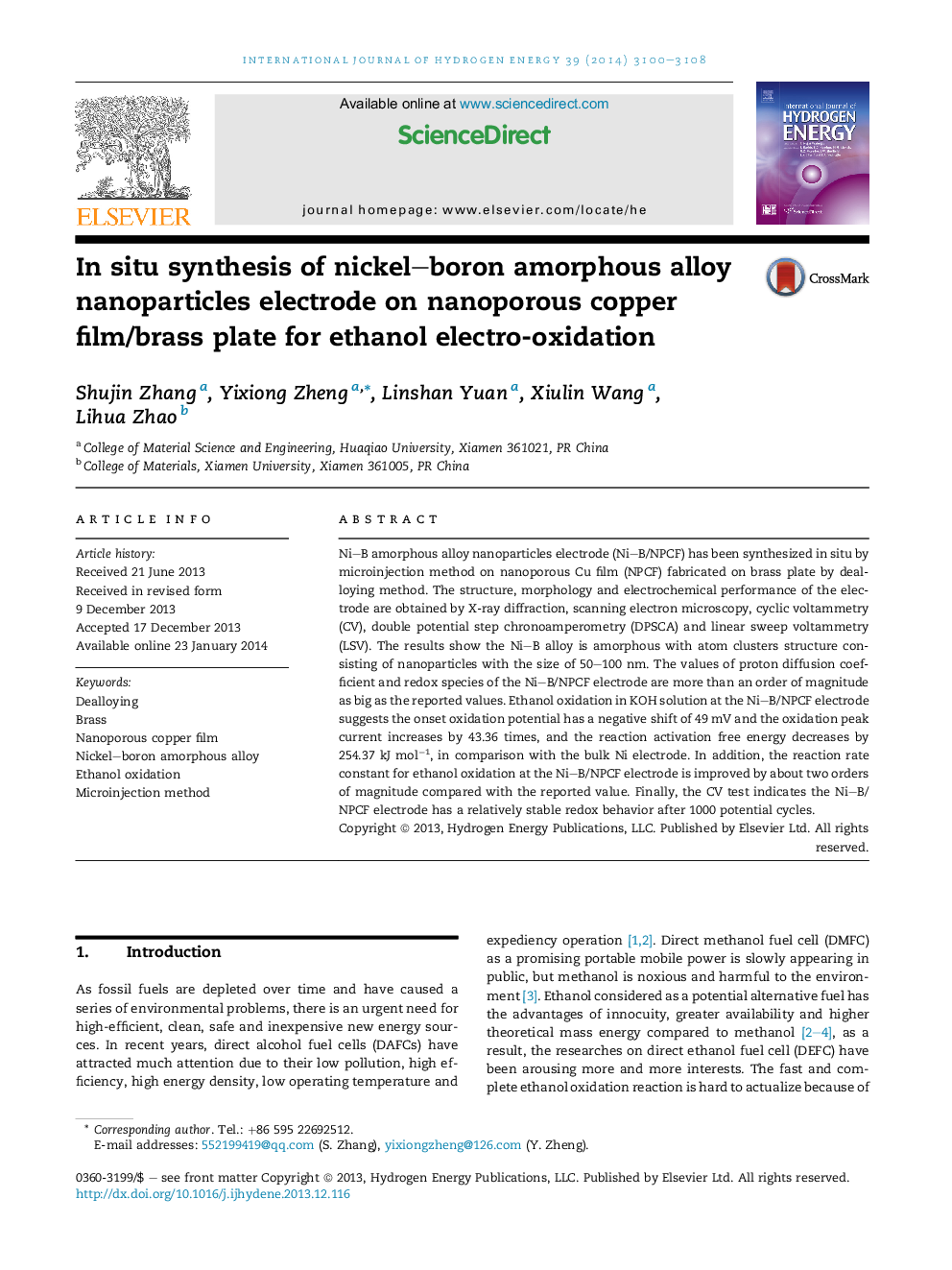| Article ID | Journal | Published Year | Pages | File Type |
|---|---|---|---|---|
| 1270615 | International Journal of Hydrogen Energy | 2014 | 9 Pages |
•Economic NPCF substrate prepared by chemical dealloying brass.•A facile method has been developed to prepare Ni–B/NPCF amorphous alloy electrode.•Lower onset oxidation potential of ethanol at Ni–B/NPCF than bulk Ni electrode.•Superior electrocatalytic activity for ethanol oxidation at Ni–B/NPCF electrode.•Long lifetime of Ni–B/NPCF electrode.
Ni–B amorphous alloy nanoparticles electrode (Ni–B/NPCF) has been synthesized in situ by microinjection method on nanoporous Cu film (NPCF) fabricated on brass plate by dealloying method. The structure, morphology and electrochemical performance of the electrode are obtained by X-ray diffraction, scanning electron microscopy, cyclic voltammetry (CV), double potential step chronoamperometry (DPSCA) and linear sweep voltammetry (LSV). The results show the Ni–B alloy is amorphous with atom clusters structure consisting of nanoparticles with the size of 50–100 nm. The values of proton diffusion coefficient and redox species of the Ni–B/NPCF electrode are more than an order of magnitude as big as the reported values. Ethanol oxidation in KOH solution at the Ni–B/NPCF electrode suggests the onset oxidation potential has a negative shift of 49 mV and the oxidation peak current increases by 43.36 times, and the reaction activation free energy decreases by 254.37 kJ mol−1, in comparison with the bulk Ni electrode. In addition, the reaction rate constant for ethanol oxidation at the Ni–B/NPCF electrode is improved by about two orders of magnitude compared with the reported value. Finally, the CV test indicates the Ni–B/NPCF electrode has a relatively stable redox behavior after 1000 potential cycles.
Graphical abstractFigure optionsDownload full-size imageDownload as PowerPoint slide
